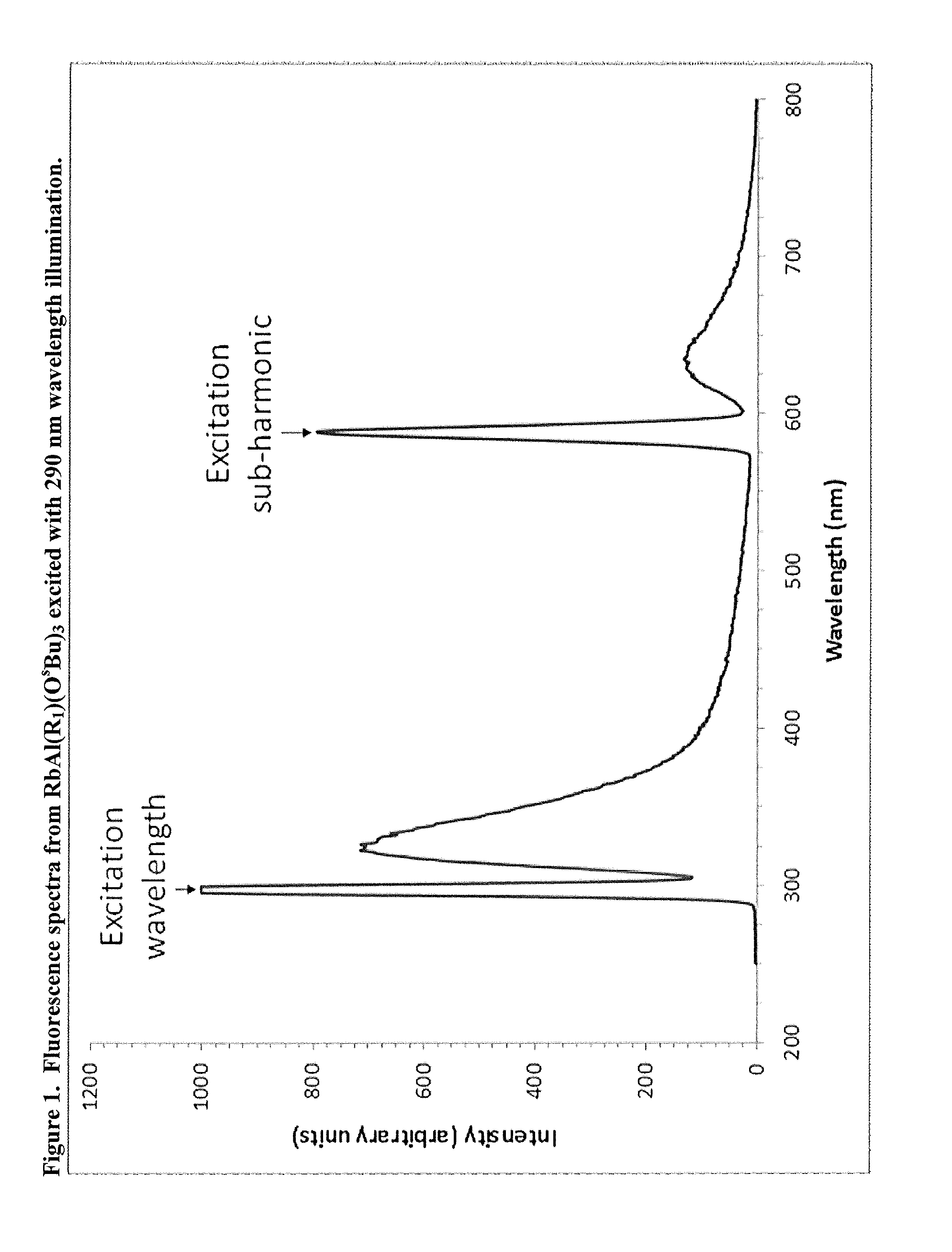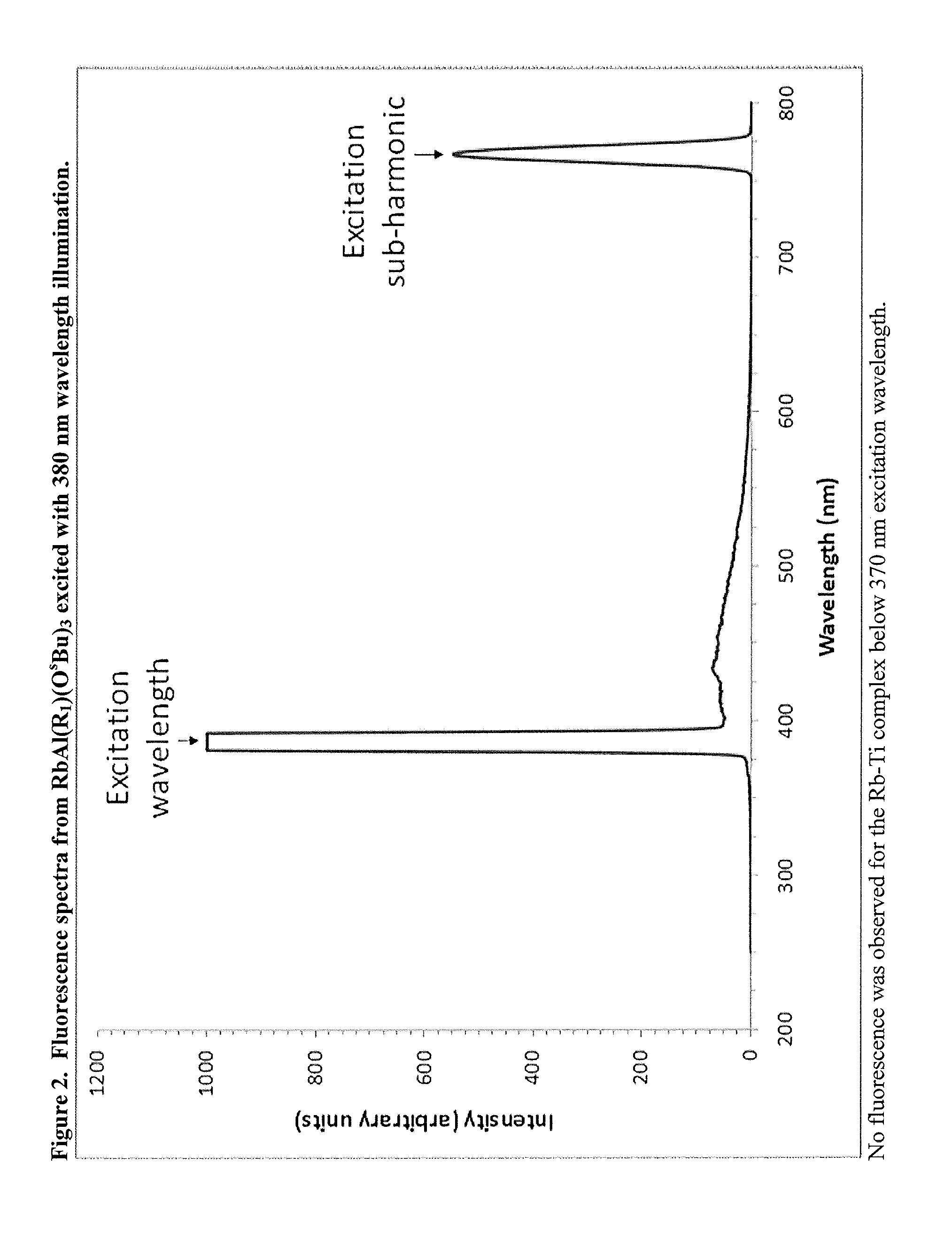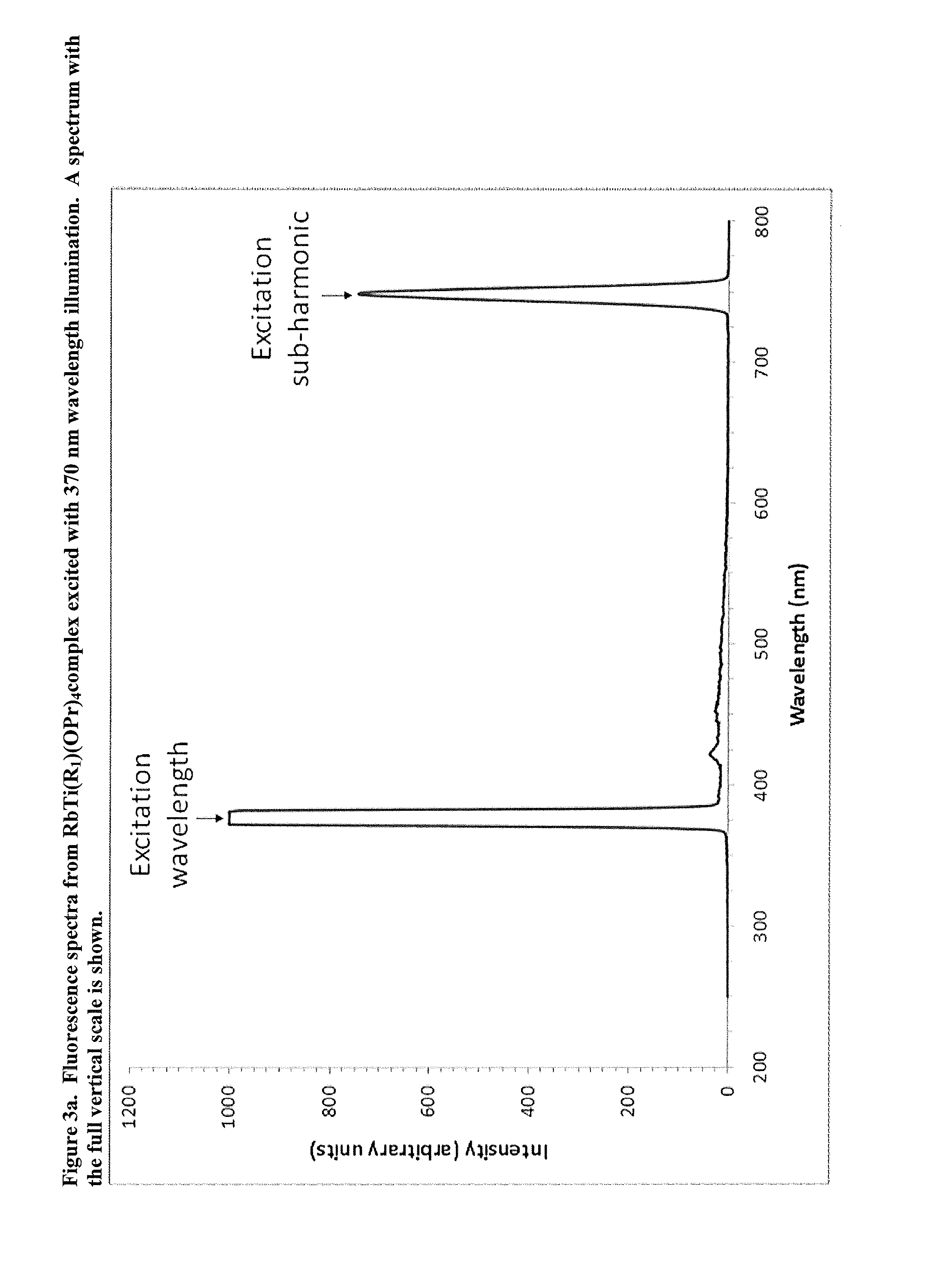Rubidium and cesium compounds for two-photon absorption
a technology of cesium compounds and rubidium vapor, which is applied in the direction of group 3/13 element organic compounds, group 5/15 element organic compounds, instruments, etc., can solve the problem that rubidium vapor may be difficult to use in practi
- Summary
- Abstract
- Description
- Claims
- Application Information
AI Technical Summary
Benefits of technology
Problems solved by technology
Method used
Image
Examples
example 1
Synthesis of both RbTi(R1)(OR)4 and RbAl(R1)(OsBu)2
[0038]In a typical synthesis for RbTi(R1)(OPr)4, 9.76 mmol rubidium acetate was dehydrated in a round-bottomed flask, which was heated under vacuum in a 150° C. oil bath (need only be 120° C.) for more than 2 hours. The flask was then cooled slightly and purged with Ar before adding any reactant. An alkoxide solution was prepared by dissolving 9.76 mmol Ti(OPr)4 in 9.1 g PGME (propylene glycol monomethyl ether (1-methoxy-2-propanol)). The alkoxide solution was then injected into the cooled flask. The mixed solution was refluxed for 1 hour under Ar. A clear yellowish solution was obtained after the reaction. RbAl(R1)(OsBu)3 was synthesized with the same procedure using Al(OsBu)3.
example 1a
[0039]Synthesis of the compound was attempted using two alternative aluminum metal-organic precursors: aluminum isopropoxide and aluminum tert-butoxide. The procedures for these experiments were the same as with the aluminum tri-sec-butoxide with the appropriate molar quantity of the alternative aluminum precursor added. In both cases these reactions failed. Neither the aluminum isopropoxide nor the aluminum tert-butoxide were soluble in the PGME solvent and there was visible residue on the bottom of the flask after the reaction.
[0040]Alternative solvent systems were also tried in an effort to determine if this synthesis could be carried out in other solvents; toluene and tetrahydrofuran (THF) were used. In both cases the Rb-acetate dissolved in the solvent as did the Al-tri-sec-butoxide. However, after the reaction was complete the solution was discolored (yellowish for toluene and a brown color for the THF) and therefore no further experiments were undertaken with these solvents.
example 2
Photoluminescence evaluation of RbAl(R1)(OsBu)3
[0041]Measurements of solutions were performed using a Varian Cary Eclipse Fluorescence Spectrophotometer. The photoluminescence emission spectrum of RbAl(R1)(OsBu)3 excited at 290 nm and 380 nm is shown in FIGS. 1 and 2.
PUM
| Property | Measurement | Unit |
|---|---|---|
| wavelengths | aaaaa | aaaaa |
| optical properties | aaaaa | aaaaa |
| absorbance | aaaaa | aaaaa |
Abstract
Description
Claims
Application Information
 Login to View More
Login to View More - R&D
- Intellectual Property
- Life Sciences
- Materials
- Tech Scout
- Unparalleled Data Quality
- Higher Quality Content
- 60% Fewer Hallucinations
Browse by: Latest US Patents, China's latest patents, Technical Efficacy Thesaurus, Application Domain, Technology Topic, Popular Technical Reports.
© 2025 PatSnap. All rights reserved.Legal|Privacy policy|Modern Slavery Act Transparency Statement|Sitemap|About US| Contact US: help@patsnap.com



